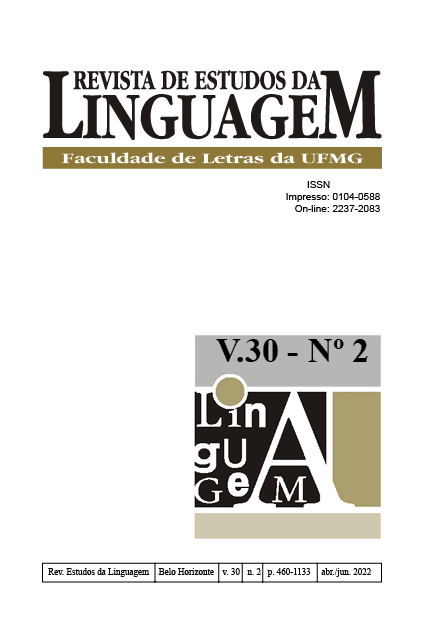Um estudo de construções com o verbo deixar em fala espontânea do português brasileiro
aspectos gramaticais/discursivos e análise acústica
DOI:
https://doi.org/10.17851/2237-2083.30.2.743-779Palavras-chave:
construcionalização, discursivização, deixar, redução especial, análise acústicaResumo
Este trabalho analisa o comportamento do verbo deixar no português brasileiro utilizando dados de fala espontânea extraídos do corpus C-ORAL-BRASIL I (RASO; MELLO, 2012). Em vista da multifuncionalidade desse verbo, relatada em outros estudos (cf. TRAVAGLIA, 2017[2007]; PINTO, 2008), procurou-se observar suas ocorrências, de modo a verificar se sua distribuição, na fala espontânea, é equivalente àquela constatada nos estudos supracitados, que registraram uma maior produtividade desse item como verbo gramatical. No bojo dessa discussão, realizou-se uma análise acústica da construção [deixa eu] em comparação com a forma de terceira pessoa do presente do indicativo, a fim de mensurar o grau de redução da construção e verificar se ela é mais reduzida tanto do ponto de vista paradigmático em relação à forma [deixa], conforme depreende-se do estudo de Bybee et al. (2016), como também do ponto de vista sintagmático, isto é, em relação às suas palavras contíguas, o que permitiria atestar efetivamente o seu grau de redução comparado à forma [deixa]. A pesquisa revelou que há mais usos do verbo com função discursiva, manifestados pela construção [deixa eu], seguidos da função gramatical e da função lexical. Não obstante, considerou-se que a função gramatical não está enraizada no verbo, mas na construção de que ele participa, o que permite assumir que ele passa por um processo de construcionalização. A análise acústica, por sua vez, revelou que a construção [deixa eu] é do ponto de vista sintagmático mais reduzida do que a forma [deixa], o que evidencia que ela se encontra num estágio mais avançado de mudança, caracterizado por sua função de marcador discursivo.





